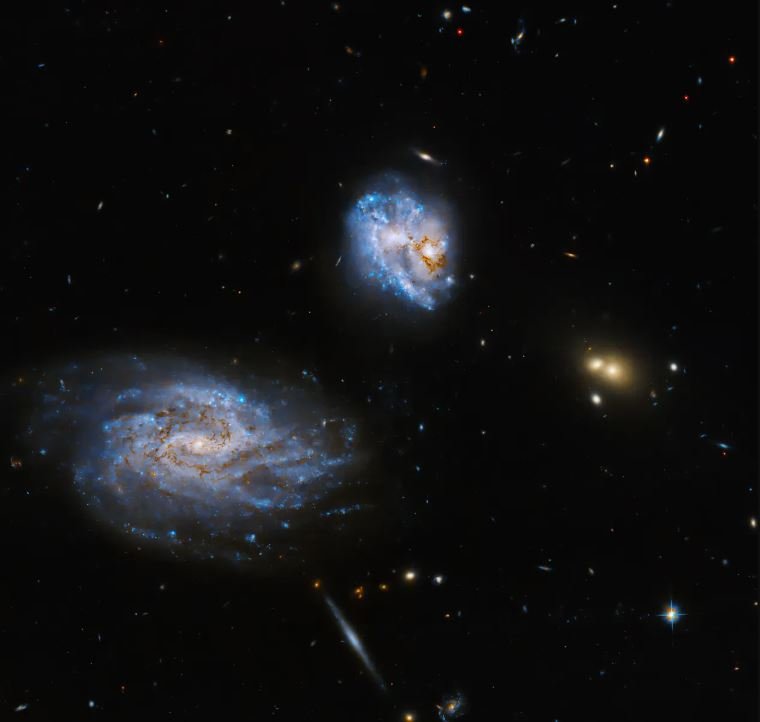In a new image recently released by the United States National Aeronautics and Space Administration (NASA), Astronomers show spiral galaxies UGC 05028 and UGC 05029 colliding during merger process. Additionally, you can also see the bright star-forming region surrounding the two galaxies, collectively called Arp 300.
The North American space agency explains that UGC 05028 is a slightly smaller galaxy than its cosmic partner, known as UGC 05029; It is precisely the larger galaxy that pulls the smaller cosmic structure through its strong gravitational field. Neither is easy to view with ground-based telescopes, but the image photographed by Hubble offers different details of each.
Scientists noticed this UGC 05028 has an asymmetric and irregular structure, but this is most likely due to its ‘gravitational dance’ with the larger galaxy. In the image published by the Hubble telescope, two huge structures can be seen head-on; its protrusions and spiral arms are shown at constant brightness.
“UGC 05029 has a distinctive spiral structure and numerous hot blue giant stars visible on the side facing UGC 05028. This enhanced star formation is probably due to the interaction between two galaxies. Another profile spiral galaxy is visible below UGC 05029 in this image, but it is too faint to resolve in the star-forming regions; The five objects listed above are likely a group of distant background galaxies,” explains NASA.
Hubble and colliding galaxies
In the image it is possible to observe that UGC 05028 emits a characteristic bright knot near its core, which should not last long depending on the strength of the UGC 05029 galaxy. Researchers explain that it is possible for the small galaxy to be completely absorbed by UGC 05029 once the merger process is complete..
According to NASA, the Hubble observation of the galaxy pair was conducted for scientists to study the general physical properties of the galaxies and their star formation processes.. It was this interaction between the two that caused the rapid birth of several stars in the region, which is considered an important dynamic of star formation.
“The bright knot visible southeast of UGC 05028’s center may be the remnant of another small galaxy in the process of merging with that galaxy. If this is the case, this remnant will eventually merge with the stellar bar visible in Hubble images of UGC 05028, forming a central bulge similar to that of Arp 300’s largest companion galaxy, UGC 05029,” adds NASA.
Did you like the content? At TecMundo, always stay up to date with the latest discoveries of the Hubble Space Telescope and take the opportunity to learn more about how the first galaxies in the universe were born.
Source: Tec Mundo
I’m Blaine Morgan, an experienced journalist and writer with over 8 years of experience in the tech industry. My expertise lies in writing about technology news and trends, covering everything from cutting-edge gadgets to emerging software developments. I’ve written for several leading publications including Gadget Onus where I am an author.










